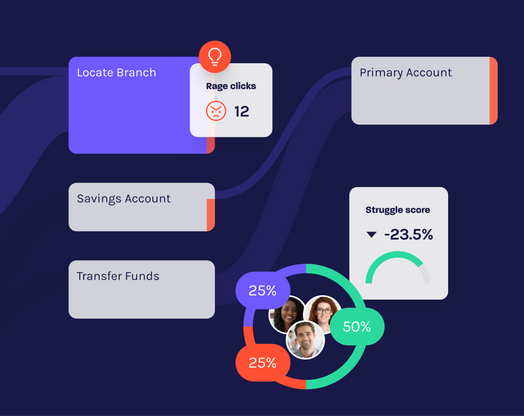
Digital experience analytics transformation should be a top priority in 2021
According to Gartner, customer experience is the highest technology investment priority for organizations right now. Indeed, the growth of customer interaction channels followed by the explosion of data they produce has created a huge challenge for organizations trying to keep up with customer demand. Many are turning to digital experience analytics—the measurement and analysis of user experience on digital channels like websites and mobile apps—to meet the demand for context and control around digital customer interactions, where most interactions are happening now.
According to McKinsey, organizations who extensively engage in analytics significantly outperform others in the market. More than 85% of companies that report a more mature customer analytics function claim they achieve a significant value contribution—compared with around 20% for those with a low usage of analytics.
Empowering your teams with customer data will require full-scale digital transformation and digital experience analytics should be a top priority for 2021. Planning priorities and budget for next year without consideration for digital experience analytics transformation could make it hard to remain competitive in our increasingly digital business environment.
Digital experience analytics transformation tackles common challenges
When a brand misses the mark, the costs are high. Consumers don’t think about the impact these digital channels have on their experience until there’s a failure. And when there is a problem, it can have a negative impact with 88% of online consumers less likely to return to a website after a bad experience. The same applies for mobile, where statistics show that 40% of users will go to a competitor after a bad mobile experience. So it’s critical for companies to get digital right.
Without a mature digital experience analytics strategy in place, decision making is slow (which is debilitating in today’s digital world), collaboration across teams is difficult and quality of data is poor (again, slowing decision making). And the biggest impact is to the customer experience—which suffers from the organization’s inability to see the end-to-end customer journey.
With data in silos, organizations are struggling to aggregate a view of the customer journey across channels and use it to effectively meet consumer demand. Indeed, companies that focus on the customer journey see a 50% greater return on marketing investments than those that don’t.








